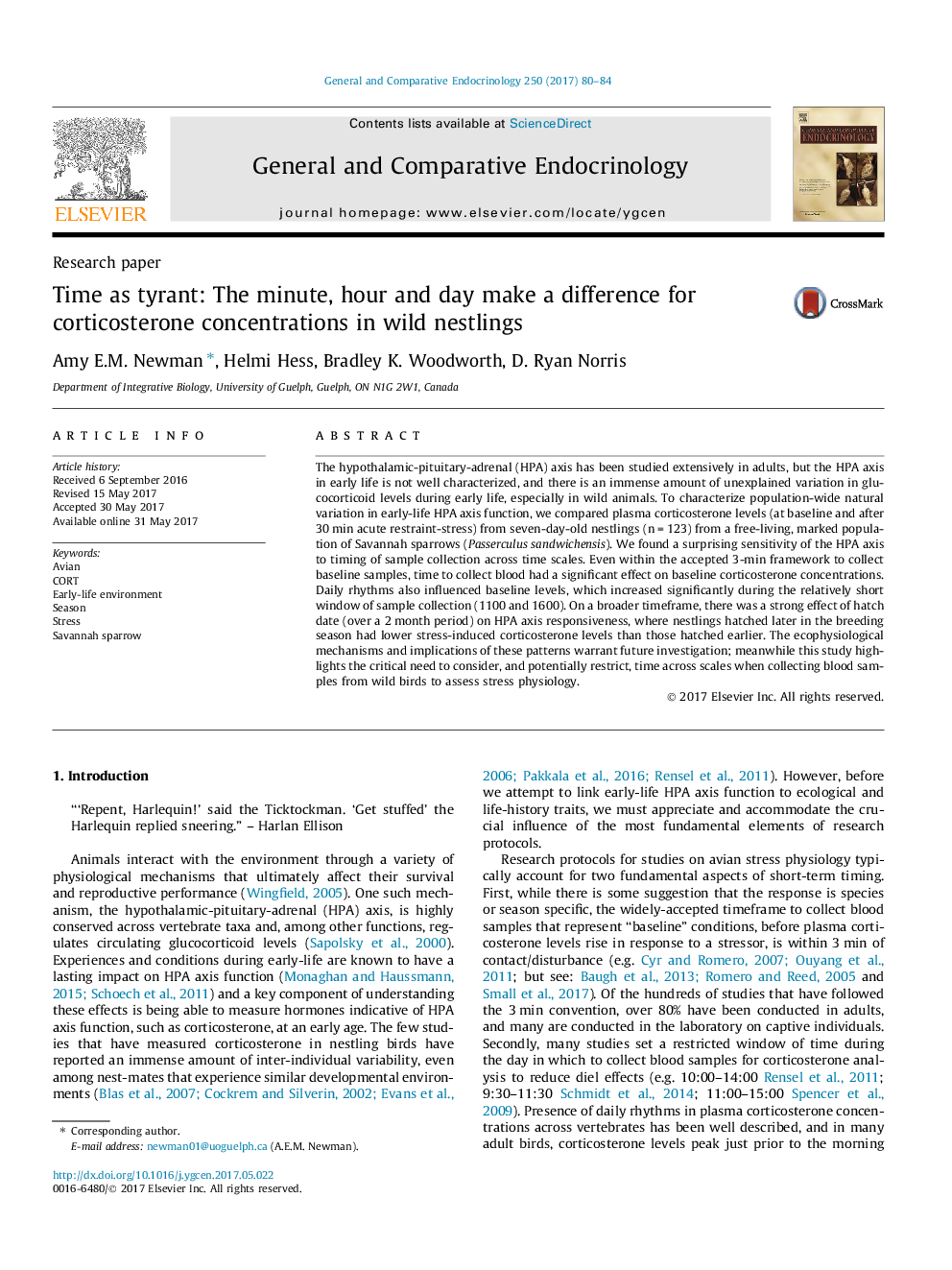| Article ID | Journal | Published Year | Pages | File Type |
|---|---|---|---|---|
| 5587674 | General and Comparative Endocrinology | 2017 | 5 Pages |
Abstract
The hypothalamic-pituitary-adrenal (HPA) axis has been studied extensively in adults, but the HPA axis in early life is not well characterized, and there is an immense amount of unexplained variation in glucocorticoid levels during early life, especially in wild animals. To characterize population-wide natural variation in early-life HPA axis function, we compared plasma corticosterone levels (at baseline and after 30 min acute restraint-stress) from seven-day-old nestlings (n = 123) from a free-living, marked population of Savannah sparrows (Passerculus sandwichensis). We found a surprising sensitivity of the HPA axis to timing of sample collection across time scales. Even within the accepted 3-min framework to collect baseline samples, time to collect blood had a significant effect on baseline corticosterone concentrations. Daily rhythms also influenced baseline levels, which increased significantly during the relatively short window of sample collection (1100 and 1600). On a broader timeframe, there was a strong effect of hatch date (over a 2 month period) on HPA axis responsiveness, where nestlings hatched later in the breeding season had lower stress-induced corticosterone levels than those hatched earlier. The ecophysiological mechanisms and implications of these patterns warrant future investigation; meanwhile this study highlights the critical need to consider, and potentially restrict, time across scales when collecting blood samples from wild birds to assess stress physiology.
Related Topics
Life Sciences
Biochemistry, Genetics and Molecular Biology
Endocrinology
Authors
Amy E.M. Newman, Helmi Hess, Bradley K. Woodworth, D. Ryan Norris,
